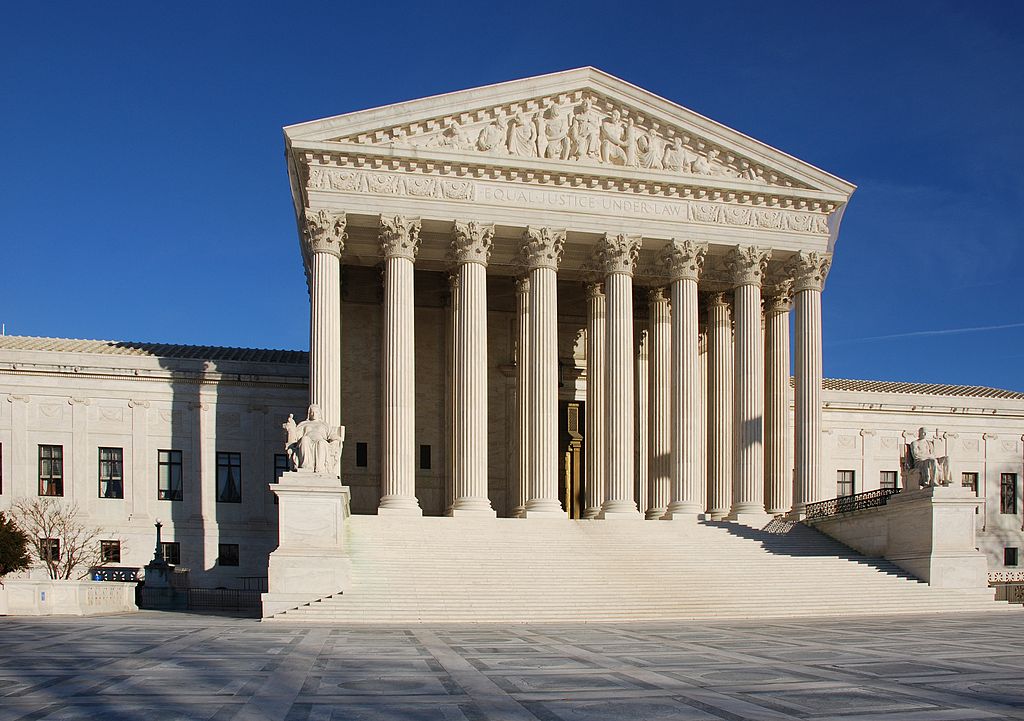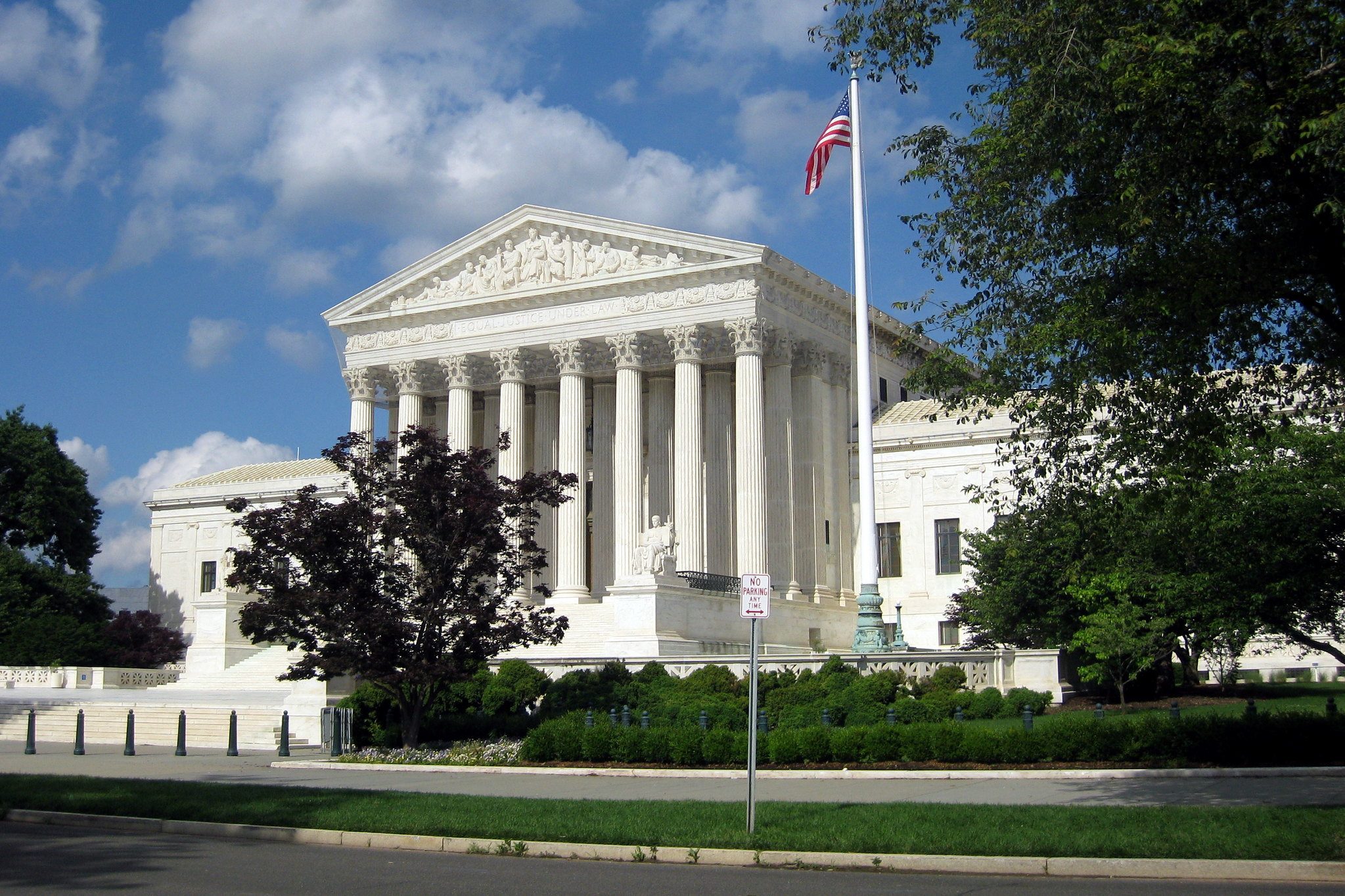The Supreme Court's Own Goal on Climate Change
The Supreme Court’s June decision in West Virginia v. Environmental Protection Agency drastically limits the agency’s regulatory authority to curtail the effects of the climate crisis and stands in jarring contrast to recent actions of the executive and legislative branches.

Published by The Lawfare Institute
in Cooperation With

In 1970, Sen. Roman Hruska of Nebraska achieved a dubious immortality when he argued that mediocrity deserves “a little representation” on the Supreme Court in remarks supporting the failed nomination of G. Harrold Carswell. Were he alive today, Hruska could say, “Mission accomplished.” A reading of the Court’s opinion in West Virginia v. Environmental Protection Agency (EPA) in June provides abundant evidence of ignorance, bad faith, and, yes, mediocrity in the arguments presented in limiting the EPA’s authority. Despite all that, thanks to a sea change in the economy, the Court’s decision may have only a minor impact on efforts to reduce greenhouse gas emissions in the United States. It could, however, hurt international efforts to coordinate action on climate change.
To begin with, as noted in Justice Elena Kagan’s acid dissent, the Court chose to shove a phantom issue into its crowded docket. The Clean Power Plan, the Obama-era climate policy aimed at lowering emissions by 32 percent by 2030 that is at the center of the case, was not in effect and was not intended to go into effect as currently constituted. Worse, by limiting the EPA’s authority to regulate how power is generated in order to meet carbon reduction goals, the majority cites outdated, easily falsifiable costs were the plan to have gone into effect.
Further, there is no expression of concern about the economic and societal effects of climate change, which include trillions of dollars in damage to the global economy, forced migration as people flee regions that become unlivable, and the potential for civil unrest and mass starvation. Nowhere in the majority opinion can one find stipulation that climate change is “the greatest environmental challenge of our time,” as Kagan describes it.
The majority’s nonchalance stands in jarring contrast to the posture taken by most of the world’s governments, the global scientific community, the executive branch of the U.S. government, and even the otherwise polarized and paralyzed Congress. Last week, the Senate came to agreement on providing $369 billion in tax credits and other incentives for companies and homeowners in order to drastically lower U.S. emissions by 2030. This came as a surprise to many observers after Sen. Joe Manchin (D-W.Va.) said last month that he would not support a climate bill until inflation was addressed. But Manchin appears to have changed his view and made a deal with Senate Majority Leader Chuck Schumer (D-N.Y.). If passed, this would be the most ambitious agreement taken by the U.S. in the fight against climate change. For its part, the executive branch is also taking the climate crisis seriously, with President Biden announcing last year that he intended to cut U.S. emissions 50 percent below 2005 levels by 2030. In July, Biden presented new executive actions on protecting communities from extreme heat, lowering cooling costs for those same communities, and expanding offshore wind jobs.
Many other government agencies have taken the climate crisis seriously for decades in their own capacities. The U.S. Defense Department and various intelligence agencies have treated climate change as a threat to national security going back to the 1990s. A review of the literature reveals dozens of studies, white papers, and other publications linking climate change and national security. The majority opinion of the Supreme Court, however, suggests that the most august court in the land remains oblivious to this threat. The only references to the costs of climate change in the majority opinion are indirect, in the form of citations of the concerns of the EPA and other groups. By contrast, in her dissent, Kagan devotes the first two paragraphs to the various costs of climate change and cites the 2021 Climate Risk Analysis 8 from the Defense Department that warns that the ultimate risk might be “state failure.”
Given 34 years of a drum beat of news on global warming, it is inconceivable that the justices in the majority are ignorant of the threat. In recent years, all the justices had to do was look out the window or turn on the news, as the country has been besieged with record heat, wildfires, and floods, all tied to climate change. Is it possible then that the majority opinion and concurrence avoided any recognition of the scale of the threat because doing so would make the case that regulatory authority could help to avert it?
The fight over the Clean Power Plan and the EPA’s regulatory authority has a tortured history. The Clean Power Plan originated in the final years of the Obama administration and was stayed by lawsuits until President Trump (who could utter the phrase “beautiful clean coal” with a straight face) came into power and his fossil-fuel-friendly EPA tried to kill it altogether and replace it with a far weaker plan called the Affordable Clean Energy rule (ACE). This plan, unlike the Clean Power Plan, didn’t require power generators to switch fuels to achieve emissions reductions. The ensuing outcry produced a flurry of lawsuits that prevented ACE from coming into force. When Biden took office, his EPA asked the Court of Appeals to stay its reinstatement of the Clean Power Plan while it considered whether to change the rule in Section 111(d) of the Clean Air Act, which directs the development of emissions standards for pollutants arising from existing sources. The EPA used this rule to justify its mandate to force coal-fired plants to shift fuel sources in order to meet emissions reduction goals. All of this remained in legal limbo until the Supreme Court decided to enter the fray under the reasoning that the EPA could, at some point in the future, insist on shifting fuels away from coal.
In making their argument, the majority takes some bizarre turns. On pages 21 and 22 of the opinion, they argue that prior measures regulating harmful emissions such as mercury are not precedent because, in that case, a technological fix—wet scrubbers—could bring emitters into compliance while there is no such technology available to lower carbon dioxide emissions from coal plants. In other words, the Court blesses the continued unconstrained emissions of greenhouse gases from coal-fired electrical generation, the biggest single-source contributor to climate change on the planet, because such emissions are an inevitable byproduct of coal-fired electrical generation and shifting power generation away from coal was not explicitly specified by Congress. It’s telling that the majority opinion never disputes that significant, cost-effective emissions reductions from coal cannot be achieved without shifting away from the fuel. The logic of this section makes sense only in a context in which the Court is unconcerned with the threat of such emissions.
As for Kagan’s dissent on the majority’s legal argument on the lack of precedent, she writes that the Clean Air Act was intended to cover novel sources of environmental harm that might develop in the future, and the EPA was delegated the authority to deal with those issues. According to Kagan, the relevant provision of the Clean Air Act “enables EPA to base emissions limits for existing stationary sources on the ‘best system.’ That system may be technological in nature; it may be whatever else the majority has in mind; or, most important here, it may be generation shifting. The statute does not care.”
More evidence of bad faith comes from a reading of the central piece of evidence the opinion cites in supporting the notion that the plaintiffs had standing to bring the case because they could, at some point, be injured parties. The evidence is a 2015 study produced by the Department of Energy estimating that reducing the amount of electricity generated by coal from 38 percent to 27 percent by 2030 would cost jobs, consistently raise energy prices by 10 percent per year, and lower the gross domestic product (GDP) by $1 trillion. A look at what has happened since this study suggests that the majority grabbed any study they could find that supported their argument for harm, regardless of whether it was contradicted by subsequent reality. Had the clerks who dug up this outdated study done a little more research, they would have discovered that here we are in 2022, eight years later and eight years before 2030, and the amount of electricity produced by coal stands at 21.8 percent, more than 5 percentage points lower than the target discussed in the 2015 study. One would think that conservative justices, so enamored of cost-benefit analysis, could do better.
Moreover, try to find the trillion dollars in damage to the GDP resulting from this shift. In fact, the shift away from coal has been an economic plus. In recent years, the biggest creator of jobs in the energy sector has been renewables, not fossil fuels. The Bureau of Labor Statistics put the number of coal jobs in the U.S. at about 37,000 in 2021. Solar and wind power alone amounted to 353,000 jobs in 2018, or nine times that amount. That number is also 74,000 more than solar and wind jobs in 2014, more than compensating for the 40,000 coal mining jobs lost during that same period. It is worth mentioning, again, that the Clean Power Plan was not in effect and, therefore, these jobs were not lost as a result of that policy. As Kagan notes in her dissent, the Clean Power Plan predicted what power generators were already doing, rather than causing them to do anything differently. She writes that “[m]arket forces alone caused the power industry to meet the Plan’s nationwide emission target—through exactly the kinds of generation shifting the Plan contemplated.”
Though the majority opinion tries (and fails) to spotlight the costs of the Clean Power Plan, it never bothers to address the costs of climate change, even though credible estimates are not hard to find. In 2019, Moody’s Analytics estimated that the global costs of a 2 degree Celsius warming would be $69 trillion. Another study by Oxfam and Swiss Re estimated that a 2.6 degree Celsius warming would inflict three times the economic damage of the coronavirus every year going forward.
That the reduction of the use of coal was achieved without the Clean Power Plan and without trillion-dollar damage to the GDP may point to the real target of this opinion—the authority of regulatory agencies. As Kagan points out, the majority argues that, per the Clean Air Act, Congress needs to explicitly delegate to the EPA the authority to determine how new sources of pollution should be regulated, though when the Clean Air Act was passed in 1970, climate change was not yet an issue of concern. As noted, Kagan cites the language of the authorizing legislation and numerous court precedents to argue that this is precisely what they did. With their focus on explicit delegation, the majority brings into play the possibility of curtailing in the future the regulatory authority of other agencies such as the Occupational Safety and Health Administration, the Consumer Finance Protection Bureau, and the Consumer Product Safety Commission, to cite a few.
The best evidence that the majority’s target was general regulatory authority is that the Court didn’t need to do anything at all. The Clean Power Plan was not in effect, and there was no plan to put it into effect. As Kagan puts it, “[T]he Court’s docket is discretionary, and because no one is now subject to the Clean Power Plan’s terms, there was no reason to reach out and decide this case,” and she goes on to write that the Court could not wait “to constrain EPA’s efforts to address climate change.”
If the Court’s real target was administrative authority, then action on climate change may turn out to be collateral damage in the majority’s pursuit of the libertarian dream of reigning in the regulatory state. Evidence that the domestic damage may be minor comes from the fact that U.S. electric power production has moved away from coal vastly more rapidly than the original Clean Power Plan envisioned. Kagan points out that many companies in the power sector that would be affected by the Clean Power Plan actually joined a brief in support of the EPA’s position, leaving one to wonder just who would be the injured parties meriting the preemptive protection provided by the highest court in the land. Renewables are now cheap enough, and climate change concerns are increasing rapidly, so market forces and investor and consumer pressures, not government action, are driving decarbonization. Expect that trend to accelerate. And now, new technologies, such as deep geothermal, offer the near-term promise of retrofitting existing coal-fired power plants and producing electricity at half the cost of the cheapest fossil fuel (according to Carlos Araque, CEO of Quaise Energy, which is commercializing a deep geothermal drilling technology developed at MIT). Still, at some level, all governments around the world will have to get involved in order to avoid the current path—one that exceeds a two-degree Celsius warming even if all nations abide by the Paris climate agreement, a temperature level not seen since before humans emerged as a species.
Action on climate change requires collective international action; the U.S. does not operate in a vacuum. As evidenced by China’s emergence as the largest greenhouse gas emitter in the world (going from half of U.S. emissions in 1990 to twice U.S. emissions now), averting the worst impacts of climate change requires buy-in by all large economies. With the Supreme Court kneecapping the EPA’s ability to mandate fuel shifts at home, it makes it that much more difficult for the U.S. to argue such shifts are needed in the economies where coal produces a far higher proportion of electric power.
The most immediate damage resulting from the EPA decision may be to the Court’s reputation. The decision shows the lengths the current majority will go to in order to find straw men suitable to advance its small-government agenda as well as either indifference or obliviousness—take your pick—regarding the most consequential issue of our times. Clearly, this narrow-minded, backward-looking majority is not up to addressing the issues that will determine the quality of life of our children and grandchildren as well as the stability of the planet’s life-support systems. Alas, Sen. Hruska’s dream has come true





